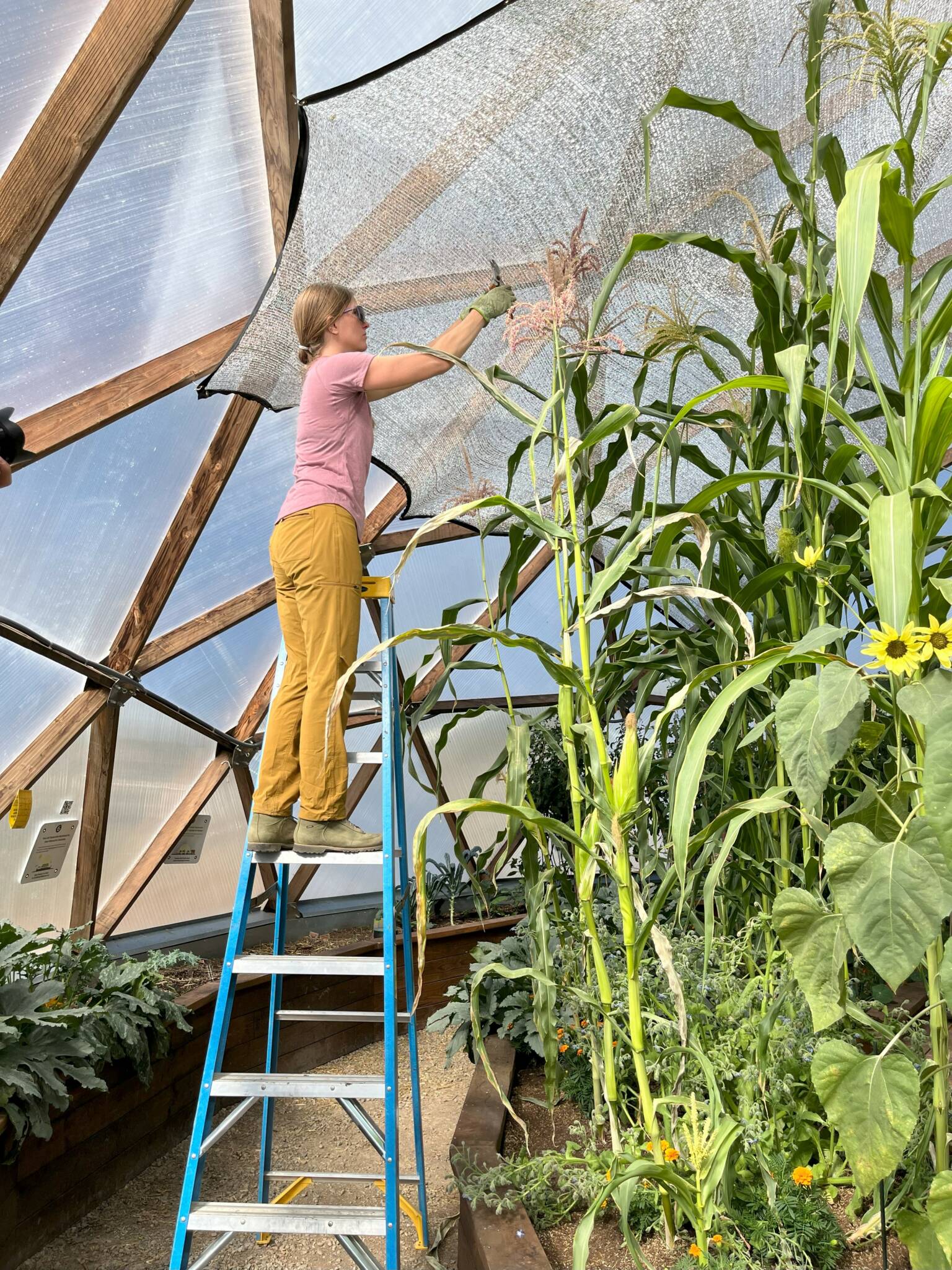
Know Before You Grow – Corn History
Growing corn in a greenhouse is entirely possible! Corn, also known as maize, hails from the Poaceae family and has its origins in Mexico. It traces back to teosinte, a wild Mexican grass that relies on wind for pollination. The practice of growing corn dates back around 10,000 years, and Native Americans introduced it to North America using the Mississippi River route. Its popularity quickly spread throughout the continent and even reached Europe as a staple food after Christopher Columbus’ expeditions.
Interestingly, the term “corn” once referred to any round grain or seed. Thus, in England, wheat fields were called cornfields, while the same held true for oats in Scotland. Isn’t that “cornfusing”? Anyway, Native Americans discovered that maize, or corn, thrived particularly well in the soil of what is now Iowa. These days, Iowa out-produces Mexico in corn, and if Iowa were a country, it would rank 4th globally in corn production!
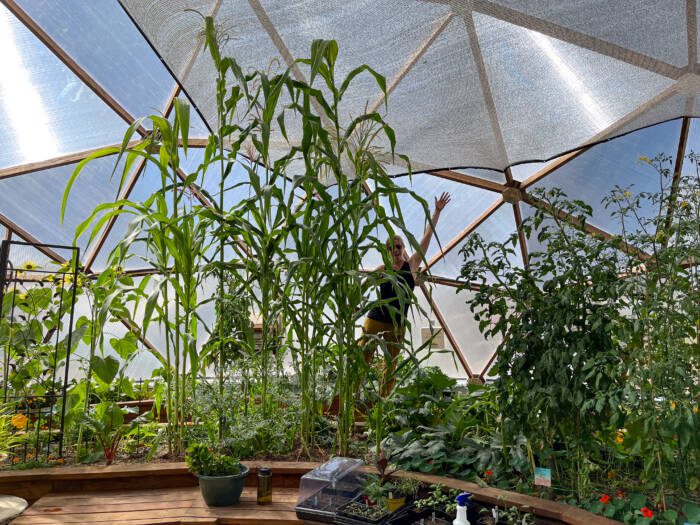
Varieties and Uses of Corn
Four types of corn have diverse applications. The favored one for consumption is sweet corn, best enjoyed fresh from the stalk for its peak sweetness. Dent corn, or “field corn,” serves as animal feed, processed food, and ethanol. Popcorn, encased in a moisture-resistant shell, conceals a starch-rich core that bursts when heated. Flint corn, renowned for its hardness, boasts lower sugar content and resilient kernels, rendering it insect and rodent resistant. It’s often ground into coarse cornmeal for grits, polenta, and semolina.
From a health standpoint, corn is primarily insoluble fiber, thus offering a low-glycemic index. This translates to gradual digestion and avertance of blood sugar spikes, promoting a sense of fullness post-meal. However, being a starchy vegetable, those with diabetes should monitor intake. Corn is rich in vitamins C, B, E, K, and several vital minerals.
Growing Corn and Hand Pollinating Greenhouse Corn Plants
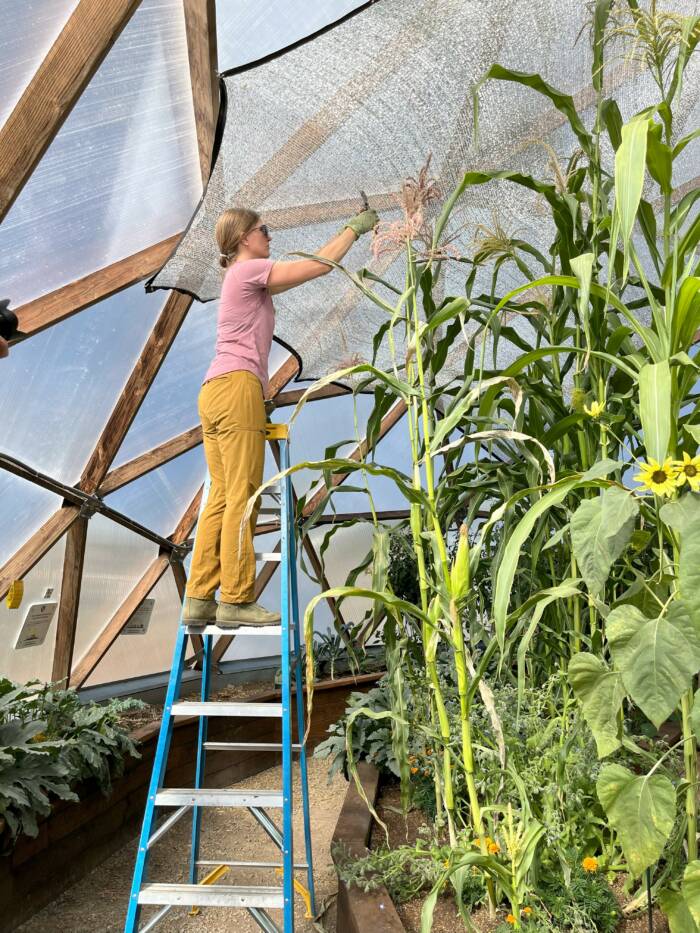
When growing corn in your greenhouse, place it in or near the center for its height and warmth requirements, as it grows tall and demands warm soil. Corn is sensitive to frost and necessitates a soil temperature of at least 60℉. Plant the corn an inch deep, spacing them 8 to 12 inches apart in blocks, such as 15 plants in a 3’x5’ area. This arrangement supports proper pollination—male tassels must connect with female silks for corn ears to form, typically one ear per plant.
Since corn is wind-pollinated, greenhouse cultivation requires manual pollination. Corn thrives in full sun, fertile, and well-drained soil with a pH of 6.0 to 6.8. To prevent cross-pollination, plant a single variety or stagger different varieties for separate pollination times. Don’t forget to consider the Three Sisters: pole beans, corn, and squash.
Corn(y) Fun Facts
- Maize, or corn, derives its name from the indigenous term “mahiz,” reflecting the green stalks cultivated by native peoples. Initially, the word “corn” encompassed any spherical grain or seed.
- Corn thrives on every continent except Antarctica. (Although, Antarctica’s need for a Dome is quite cornspicuous!)
- Standing at an average height of 8′, corn plants are perfect for creating intricate mazes. The pinnacle of corn growth reached an astounding 48′, a feat accomplished by Jason Karl in 2021 when he utilized heat to extend his New York growing season, shattering his own record.
- Did you know that corn is a vegetable, grain and fruit? Corn is a starchy vegetable, its kernels are grain and can be milled into flour, but since it comes from a seed or flower of a plant, that also makes it a fruit.
- Remarkably, a single acre of corn can purge a staggering 8 tons of carbon dioxide from the air.
- Iowa takes the crown as the leading corn cultivator among states, producing more corn than the entirety of Mexico!
- Believe it or not, there exists a Broadway musical devoted to corn—aptly named “Shucked.” In fact, it clinched a prestigious Tony Award!
Corn Companion Plants – Expert Tips for Growing Corn
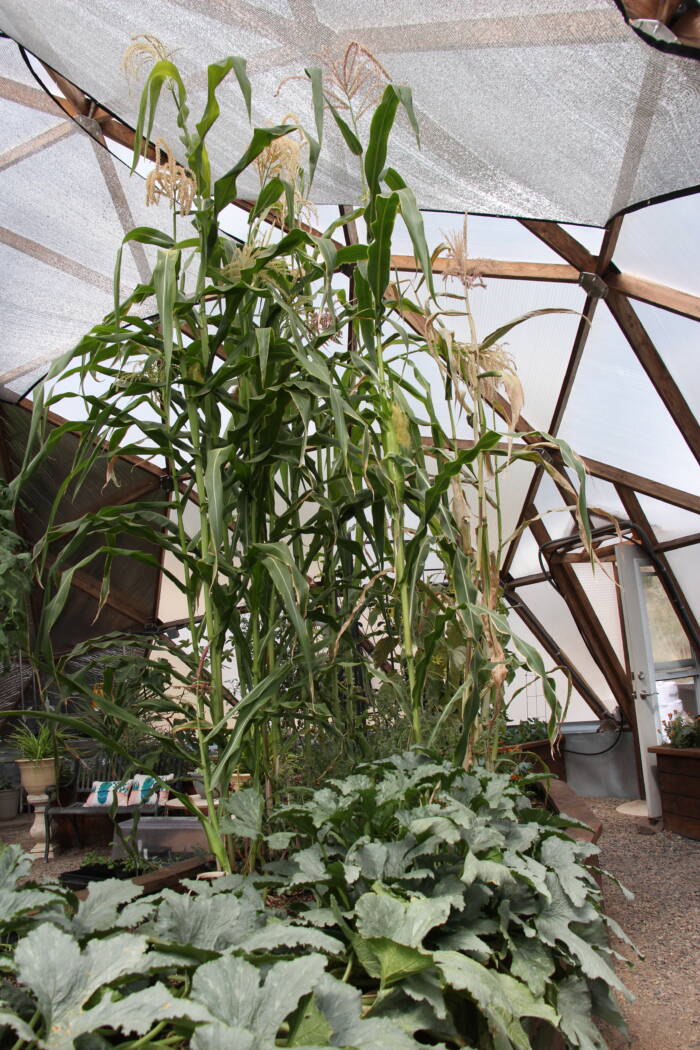
As previously mentioned, companion planting involves using plant knowledge to enhance each other’s growth. Some plants provide nutrients, attract beneficial insects, or act as traps. An excellent instance of this is the Three Sisters combination: pole beans, corn, and squash. The beans climb the corn, negating the need for a trellis. These beans enrich the soil with nitrogen, benefiting all three plants. The small squash leaves function as mulch, shading the soil and preventing weeds. They also have a prickly nature, deterring raccoons and other pests.
While Native American squash varied, the most suitable options for a Three Sisters garden are small leaf squash like yellow summer crookneck, zucchini, or Hubbard. Other compatible plants for corn include sunflowers (also a “sister”), cucumber, dill, melons, radishes, peas, marigolds, nasturtium, and mint. However, be cautious with mint’s invasiveness; it’s better to plant it in pots rather than directly in the garden. For outdoor corn planting and deer deterrence, consider anise hyssop due to its unappealing scent to deer.
Visit the Farmers’ Almanac Companion Planting Guide to learn more.
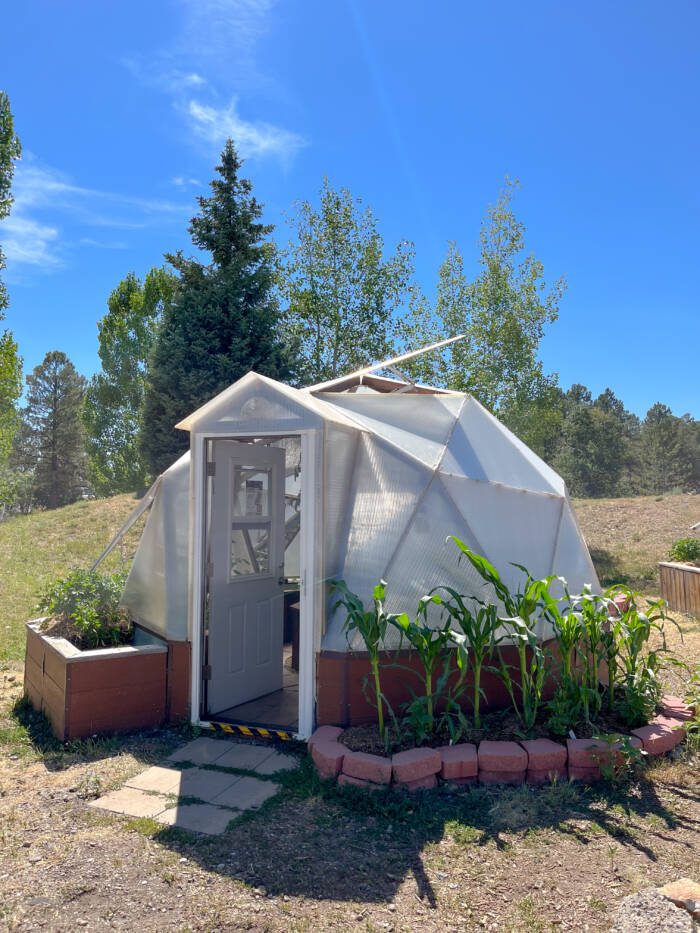
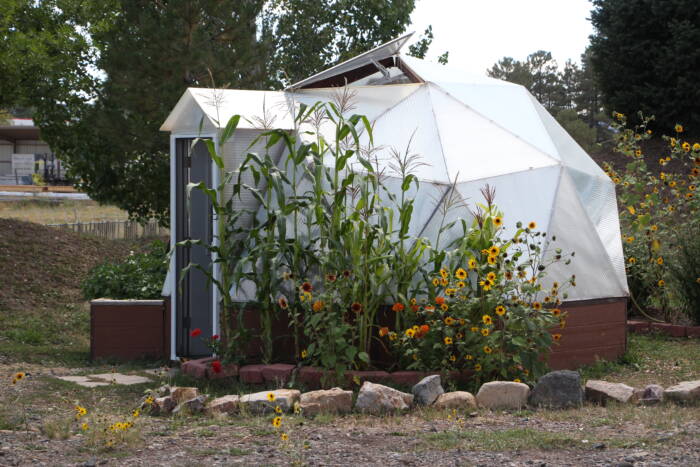
How to Harvest Corn
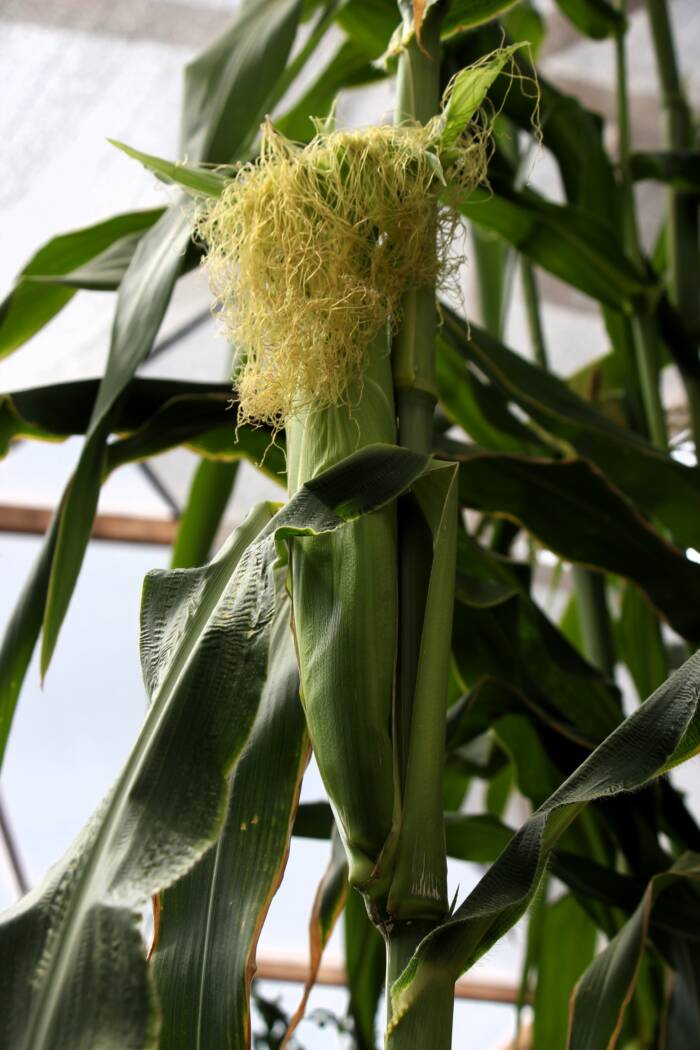
Aw, shucks! That’s right, you’ll be harvesting corn shucks! Corn can be classified as a vegetable or a grain, depending on the timing of harvest. If you pick it while the kernels are soft and juicy, you’re gathering a starchy vegetable. On the other hand, if you harvest when the corn is fully mature and dry, it becomes a whole grain.
Corn reaches harvesting readiness when its ears are dark green and plump with brown tassels. Check its firmness by gently squeezing; it should have a rounded tip, not a pointed elf ear tip! Another method is to press a kernel with your fingernail; if milky liquid squirts out, it’s good to go. To detach the ear, pull it downward and twist to remove the cob from the stalk. It’s at its sweetest right at harvest, so either enjoy it immediately or be prepared to preserve it.
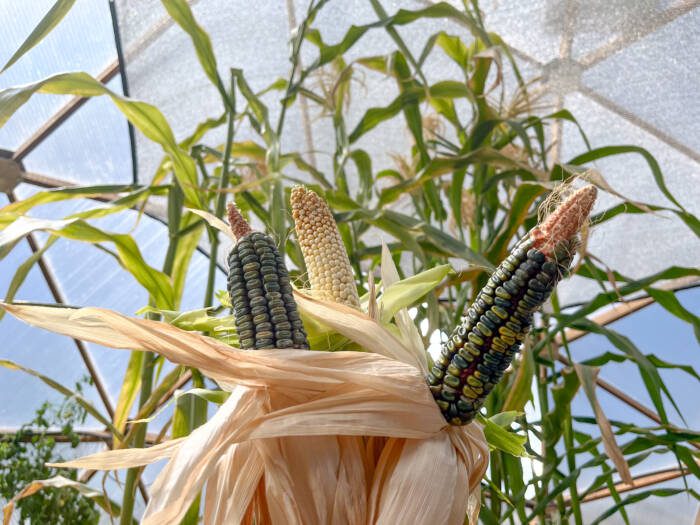
We hope you learned that you truly CAN grow corn in a greenhouse and survived all the corny jokes and puns. If you are looking to savor the delicious results of your corn harvest try our mouthwatering Roasted Green Chili Corn Cakes with Fresh Corn Salsa recipe. Sign up for our newsletter below to receive this recipe and more culinary delights straight to your inbox!
